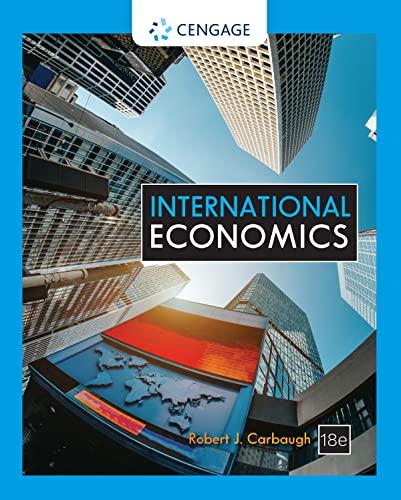On his first day in office in January 2017, President Donald Trump signed an executive order removing
Question:
On his first day in office in January 2017, President Donald Trump signed an executive order removing the United States from the proposed Trans-Pacific Partnership (TPP). This marked the first time the United States has abandoned a trade agreement that it initially supported. Trump emphasized that he was preventing trade deals that have taken companies out of the United States, resulting in job losses for American workers. Trump also indicated that, in the future, he would sign bilateral trade deals only with individual nations, and such deals would result in a lot of companies coming back to the United States. Let us consider the TPP and the implications of the U.S. withdrawal.
After five days of intense round-the-clock talks, on October 5, 2015, trade negotiators reached the Trans - Pacific Partnership (TPP) trade deal, which was ratified by governments of the participating nations in March 2018. The TPP was the product of 10 years of negotiations and was desired by President Barack Obama who sought a foreign policy link to the Pacific Rim. The TPP is a trade liberalization agreement among the United States and 11 other Pacific Rim countries: Japan, Vietnam, Malaysia, Singapore, Brunei, Australia, New Zealand, Canada, Mexico, Peru, and Chile. This group of nations has an annual gross domestic product (GDP) of some $28 trillion, which represents about 40 percent of global GDP and one-third of world trade.
Not showing interest in joining the negotiations, China was suspicious of the pact, viewing it as a potential threat as the United States attempted to tighten its ties to Asian trading partners. Also, China could not be part of this deal, which did not allow government-owned companies to have special privileges, because China is currently dominated by state-owned enterprises.
The goal of the agreement is to enhance trade and investment among the partner nations; to promote innovation, economic growth, and development; and to support the creation and retention of jobs through lower trade barriers. The United States considered the TPP as a companion agreement to the proposed Transatlantic Trade and Investment Partnership, a similar agreement between the United States and the European Union.
Supporters maintained that the TPP would benefit all the participating countries and that it is written so as to encourage additional countries, possibly even China, to sign on. However, opponents in the United States considered the pact as mostly a giveaway to business, encouraging additional exporting of manufacturing jobs to low-wage nations, while restricting competition and promoting higher prices for prescription drugs and other high-value products by spreading American standards to patent protections to other countries.
Trump's policy of abandoning the TPP upended a free trade strategy adopted by presidents of the Republican and Democratic parties dating back to the 1960s. It positioned him more with the political left, including labor unions. However, some in both parties worried that China would move to fill the economic vacuum as America looks inward and would increase its influence over Asia and elsewhere. Will Trump reconsider his abandonment decision in the future?
What do you think? If you were a member of Congress, would you ratify the TPP?
Step by Step Answer:






